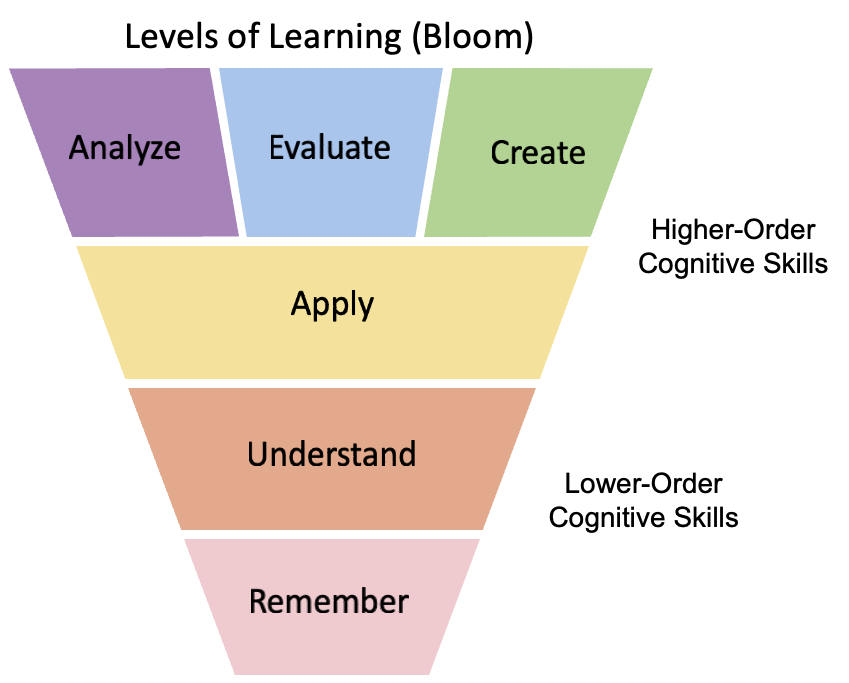DESIGNING LEARNING OUTCOMES
Each course is shaped by several big picture course-level outcomes (typically no more than 6). These overarching goals of the course reflect the skills and knowledge that students should master by the end of the semester. Supporting these course-level outcomes, are a series of objectives. These are outcomes tied to a course unit. These should be important, clearly stated, measurable (you have to be able to determine whether a student has met them), realistic, and match the level of the learner.
Various taxonomies of learning can help you begin to articulate what you want your students to achieve through the course. Bloom’s Taxonomy looks at different levels of learning and contains Affective (emotions), Psychomoter (Action-based) as well as the more frequently referenced Cognitive domain of learning. Fink’s taxonomy is another way of organizing learning outcomes into categories of significant learning. These taxonomies are useful for creating a range of learning outcomes representing what you want students to take away from the course, including those cultivating higher-levels of thinking and portable skills that will transfer to students future personal and professional lives.

As you write each outcome, it is important that the language be clear stated so that a student can understand what each means and how they would be able to demonstrate their achievement of the outcome. When reviewing your outcomes consider the following qualitites:
- Student-Centered: The “stem” should be focused on the students and what they will achieve, as opposed to the goals of the course or the instructor.
- Measurable: The outcome should signal some way that students could demonstrate their achievement of it in a way that someone could observe. Verbs like “know” and “understand” are less measurable; verbs like “implement a strategy” and “examine texts” are more measurable.
- Inclusive: The outcome should recognize/represent student diversity, avoid presenting unnecessary barriers, and be aware of any assumed prerequisite knowledge.
Additional Resources
- Taxonomies-of-Learning-and-Verbs-for-Learning-Outcomes a handout to help you articulate your course learning objectives.
- Fink’s Significant Learning Outcomes – University of Buffallo
- Learning Objectives Samples – Carnegie Mellon University’s Eberly Center offers samples from over 35 courses from various disciplines
